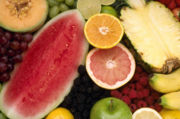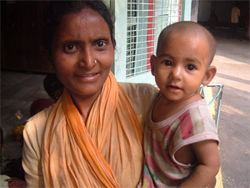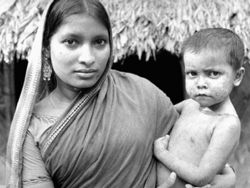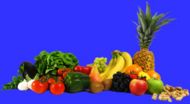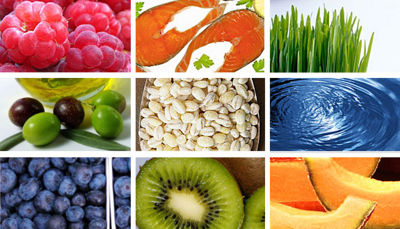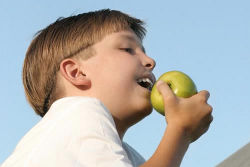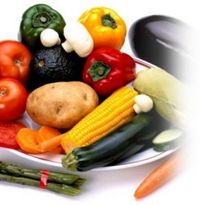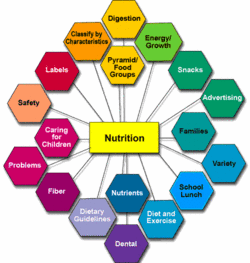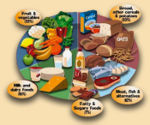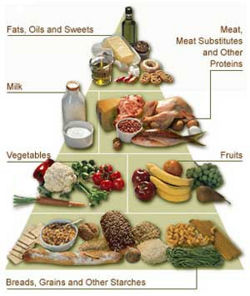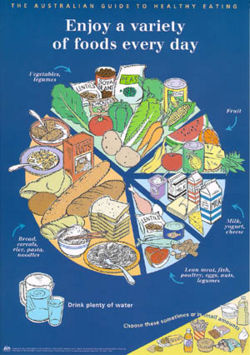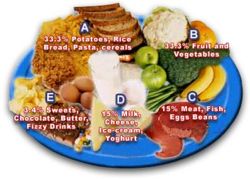Food And Nutrition

|
Food and Nutrition |
By Sabina Yeasmin
- Introduction
- Learning Objectives
- Nutrition and Health
- Relationship between Nutrition and Health
- Nutritional Status
- Balanced Diet
- Charactrerestics of a balanced diet
- Balanced diet for different individuals
- Let's Sum Up
- Key Points
- Glossary
- Practice test

|
Introduction |
We know, the food that we eat is digested and absorbed it is utilized by the body. Food helps us in staying healthy. What do we mean by the term ‘Health’? How do we know if a person is healthy? What is meant by the term ‘Nutrition’? Our diet should be such that it meets our nutritional requirements and thus helps us in our health. Although food occupies the first position in the hierarchy of our needs, ignorance of many basic facts relating to food and nutrition is still widespread. All of us eat food every day – but have we ever paused to consider if our diet is balanced? In fact, do we even know what kinds and amounts of foods would make our diet balanced and lead us toward good health? Buying and cooking foodstuffs is a common experience for all of us. However, when purchasing, do we really know hoe to select the food items? Do we know the household ways of finding out whether the food item is adulterated? If the diet is not balanced the result would be malnutrition and nutritional deficiency diseases. So, we find out the type of diet that should be eaten by a person who is suffering from a disease – from fever, diarrhoea, diabetes or hypertension.
| Nutrition and Health |
HEALTH
Health is the state of complete physical, mental and social well-being, and not merely the absence of disease. From this definition, you can list the three main aspects of health. They are: 1. physical well-being 2. mental well-being 3. social well-being.
Thus, a person is said to be healthy if he is physically, mentally and socially well.
Let us now enumerate some of the characteristics of a healthy person.
Sings of good health

|
Activity |
| As you know, good health is characterised by physical, mental and social well-being. What is the signs of good health?Which one is healthy? | |
Nutrition
Nutrition is a science that studies the relationship between diet and health. The purposes of nutrition science is to explain metabolic and physiological responses of the body to diet.
Nutritionists are health professionals who specialize in this area of study, and are trained to provide safe, evidence-based dietary advice and interventions.
Deficiencies, excesses and imbalances in diet can produce negative impacts on health, which may lead to diseases such as cardiovascular disease, diabetes, scurvy, obesity or osteoporosis, as well as psychological and behavioral problems.
Moreover, excessive ingestion of elements that have no apparent role in health, (e.g. lead, mercury, PCBs, dioxins), may incur toxic and potentially lethal effects, depending on the dose.
Many common diseases and their symptoms can often be prevented or alleviated with better nutrition.
All of us eat food. Food provides nourishment to the body and enables it to stay fit and healthy. We already know that the food that we eat undergoes a combination of processes. It is digested, absorbed into the blood, transported to different parts of the body and utilized from the body.
The sum total of all the processes involved in the supplying of nourishment to the body is what is meant by the term Nutrition.
| Relationship between Nutrition and Health |
As you know, nutrition is a process in which the food that is consumed is used for nourishing the body. Good nutrition is essential for good health. Nutrition is very important for a person to grow and develop normally and to remain healthy throughout life. When a person does not eat proper food, there are chances of his not developing normally- the likelihood that some organ of his body may start malfunctioning, or that he may get some disease? Poor nutrition may also influence his mental and social well-being.
Thus, generally, the health of a person depends on the kind and amount of food he eats. The right kind of food eaten in the right quantity is necessary for good health.
| Nutritional Status |
Let us now introduce ourselves to another term ‘Nutritional Status”.
We have already defined the term nutrition. Anything related to or connected with nutrition can be called ‘nutritional’. By ‘status’ we mean position or level. The two words together should then mean the position of an individual connected or related with his nutrition. Nutritional status is the level of nutrition of an individual.
The level to which the food eaten is used by the body and the effect it has on the health of the individual is the nutritional status. An adequate amount of the right food will provide the necessary nourishment required by the body. This will lead to a good nutritional status and therefore good health.
| Balanced Diet |
Our diet should be such that it meets our nutritional requirements and thus helps us in staying healthy. In addition, it should provide for storage of some amounts of nutrients in the body so that the body can withstand short periods of low dietary intake. It is called a balanced diet.
A balanced diet is one which contains different types of foods in such quantities that the individual’s need for the various nutrients is adequately met, and some amounts of nutrients are stored in the body to enable it to withstand short periods of low dietary intake.
| Characteristics of balanced diet |
If we don't eat food, then our bodies don't work.
If we don't eat the right food, our bodies don't work as well as they can.
Healthy food gives our bodies the tools they need to:
- build bones and muscles healthy body
- repair and replace worn out cells
- keep all systems working
- keep us healthy.
So it is really important that we give our bodies the right kinds of food to do the job.

|
Activity |
| What are the right kinds of food? | |
| Food examples | What is a serve? | Daily serve from this group |
|---|---|---|
| Breads, cereals, rice, pasta and noodles | ||
| Bread | 2 slice | 5 - 9 serves each day |
| Rolls | 1 roll | |
| Cereal | 1 cup | |
| Wheat biscuit | one | |
| Pasta | 1 cup | |
| Rice | 1 cup | |
| Vegetables and legumes | ||
| Cooked vegies | Half a cup | 4 or 5 Serves each day |
| Medium potato | Half a cup | |
| Carrot [sliced] | Half a cup | |
| Broccoli | Half a cup | |
| Spinach | Half a cup | |
| Cauliflower | Half a cup | |
| Salad | One cup | |
| Fruit | ||
| Any fruit, eg. apple, orange | 1 piece | 2 or 3 serves each day |
| Fruit juice | Small glass | |
| Raisins/sultanas | 1-2 tablespoons | |
| Dried fruit | 4 pieces | |
| Milk, yoghurt and cheese group | ||
| Milk | 250ml | 2 - 4 serves Each day |
| Yoghurt | 200g | |
| Cheese | 40g | |
| Custard | 250ml | |
| Meat, poultry, fish, beans, eggs, nuts and legumes | ||
| Beef, chicken fish | Small portion | 1 - 2 serves Each day |
| Peanut butter | 1 tablespoon | |
| Baked beans | Half a cup | |
| Fish fingers | Two | |
Fats and oils
Even though you need fats and oils to grow and be healthy we haven't put a place on the table for fats and oils because you will get most of what you need from your other foods, such as meat, eggs, cheese, peanut butter and margarine on your bread.
It's a good idea to start the habit of eating mono-unsaturated fats (check out the label on cooking oils, margarines and spreads) light cheeses and low fat ice-cream. Your heart will love you for it!
Sweets, cakes, biscuits and soft drinks
You may have one small serve of cake or chips, or 2 sweet biscuits .... but not all of them! Soft drinks usually have a lot of sugar in them which you do not need.
Try to make sweets a sometimes treat rather than every day.
| Balanced diet for different individuals |
A balanced diet is according to the needs of the individual. Balanced died for different individuals. As is perhaps obvious to you, the composition of balanced died is different for different individuals. The types of foods and their amounts that each of us should eat, vary because of many factors. Yes, these are the same factors that affect the nutritional needs of a person. Do you remember what they are? You are right. They are age, height, weight, sex, occupation, climate, health and physical conditions.

|
Results |

|
Key Points |
The key points of this chapter are as follows:
- Nutrition
- Nutritional Status
- Health
- Balanced Died.

|
Practice Test |
Short Answer Questions
- 1.Define ‘Nutrition.
- 2.Define and explain the term ‘Nutritional Status’.
Essay type Questions
- 1.Define the term health and enumerate the characteristics of a healthy person.
- 2.How are nutrition and health related?
- 3.Define ‘Balanced diet’. What are the characteristics of a balanced diet?

|
Answers to SAQs |
SAQ-1
True or false
- 1.False
- 2.True
- 3.True
- 4.False
- 1.False
Fill in the blanks
- 1.Nutrition
- 2.Nutritional status
- 3.Health.
- 1.Nutrition
SAQ-2
Multiple Choice
- 1. D
- 2. A
- 3. C
- 1. D


